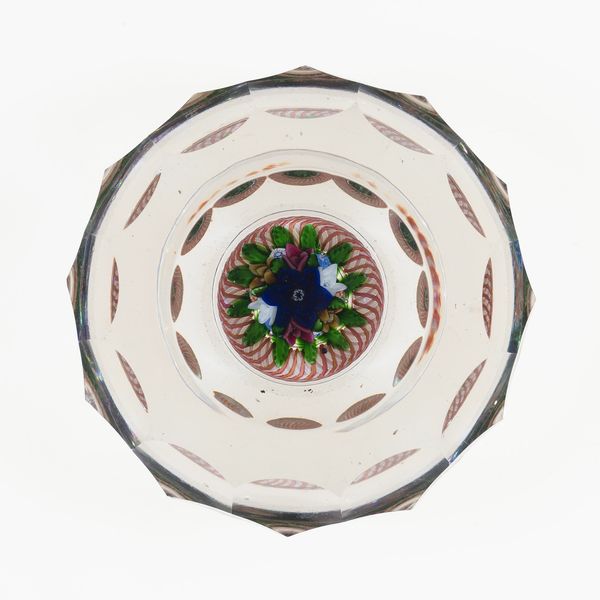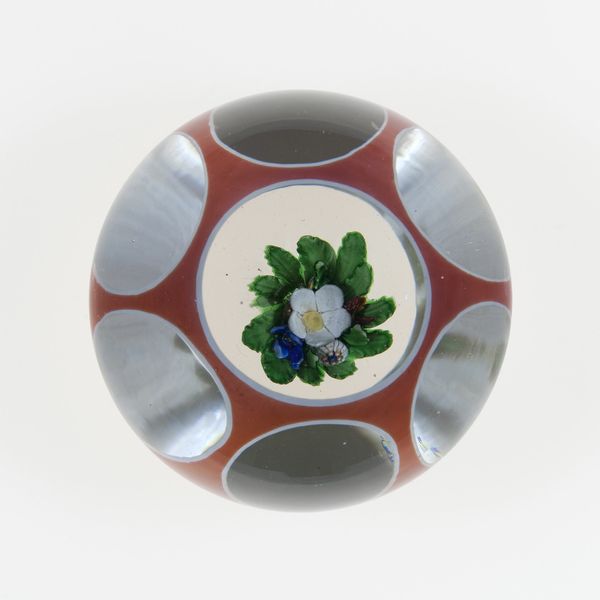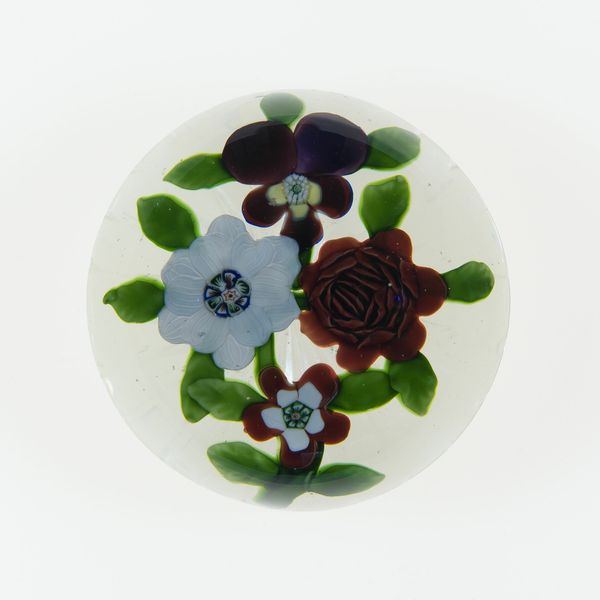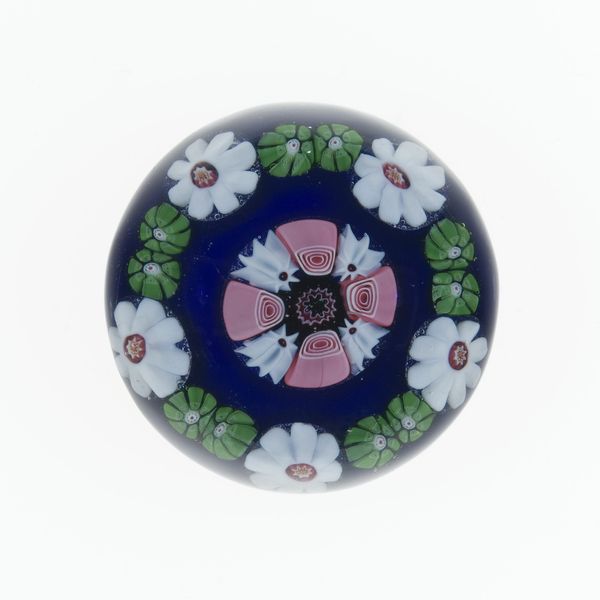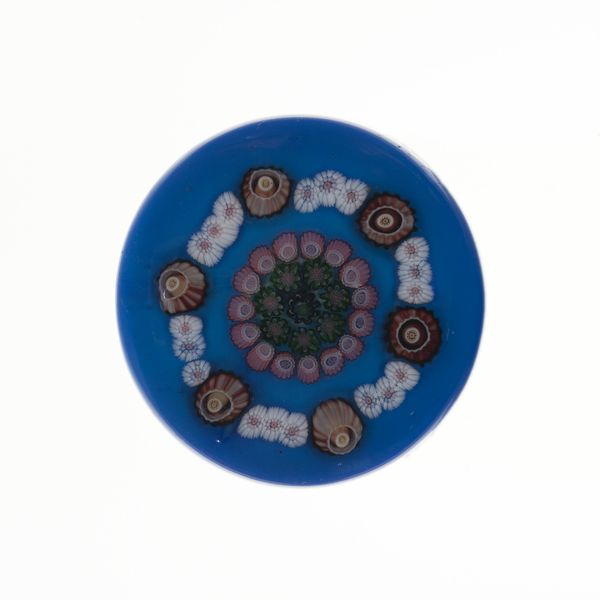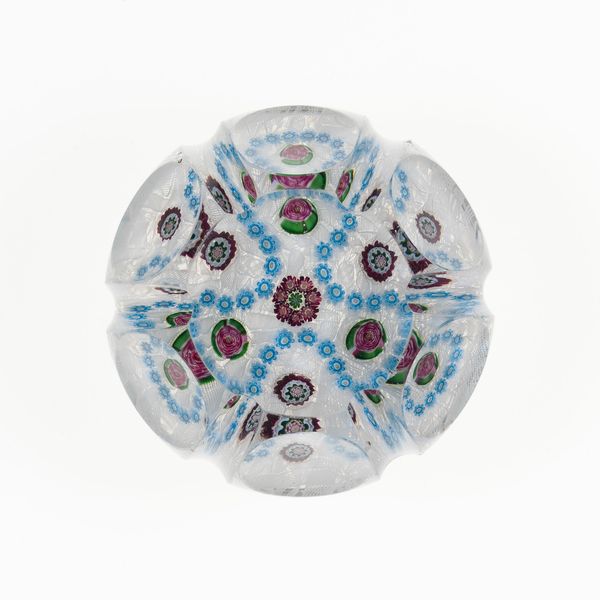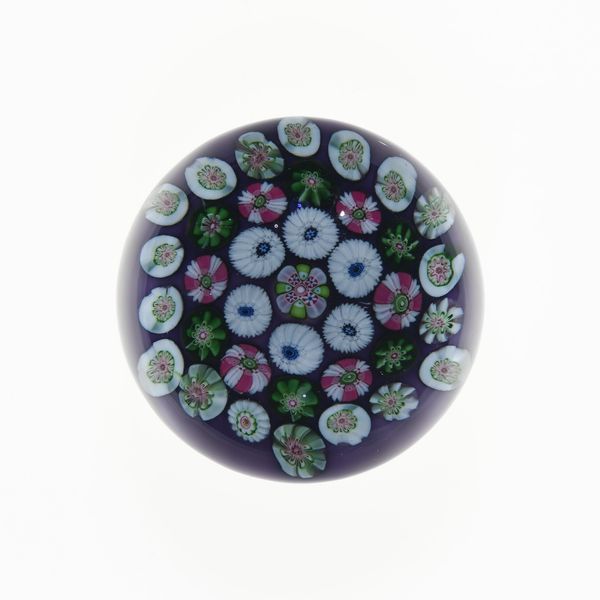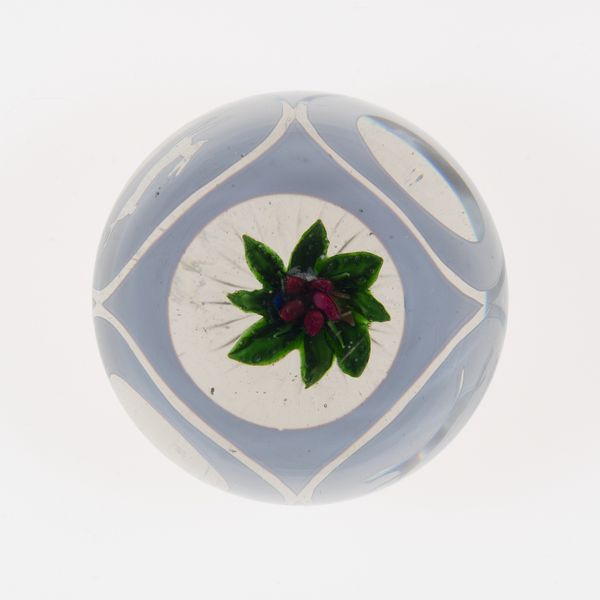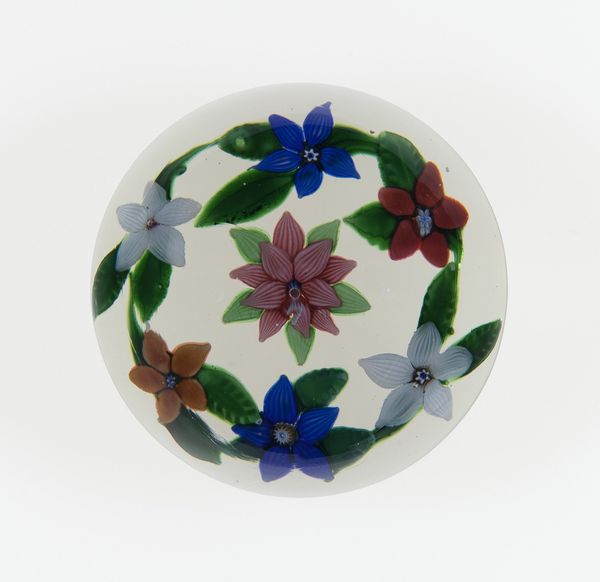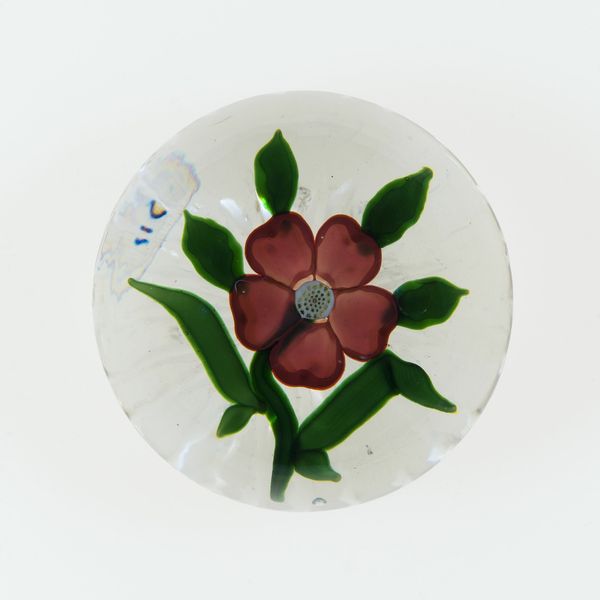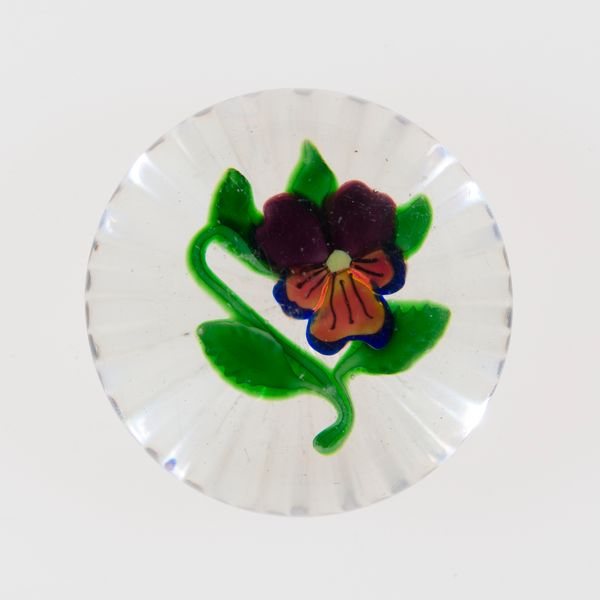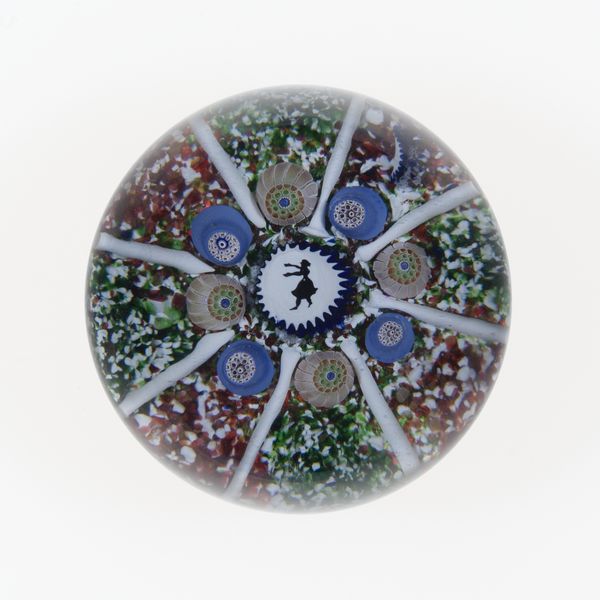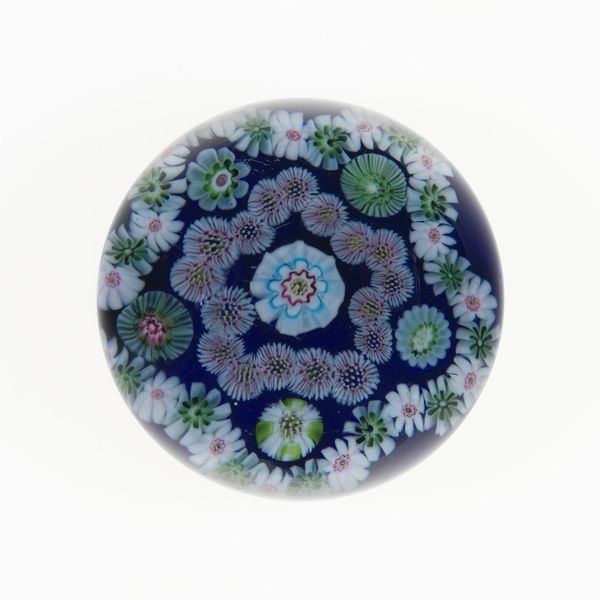
paper, glass, sculpture
#
sculptural image
#
paper
#
glass
#
sculpture
#
ceramic
Dimensions: Diam. 7.3 (2 7/8 in.)
Copyright: Public Domain
Editor: This small, glass paperweight was crafted by Compagnie de Saint Louis, sometime between 1845 and 1860. The way the glass distorts the bouquet inside is just magical, but what strikes me is how ordinary its function is in contrast with the intricacy of its creation. How do you see this object? Curator: I'm drawn to that contrast you mentioned – the high level of skill applied to something so quotidian. It invites us to consider the materials themselves: the glass, its properties, the intense labor required to manipulate it in such a controlled manner. Think of the specialized knowledge, the physical effort! Editor: So, less about the pretty flowers and more about what it took to get them in there? Curator: Exactly! The floral arrangement, encased and preserved, almost becomes secondary to the means of production. We can even think about the market forces driving this level of craftsmanship for something as commonplace as a paperweight. It challenges the usual hierarchies, blurring the line between art object and commodity. What about the social context of its use? Editor: It's true. Why not just a rock? It speaks to status, maybe? The average person wouldn’t need a luxurious paperweight like that to keep things in order. It would almost feel like showing off. Curator: Precisely! Think of the material conditions of the time; this reflects a specific class able to consume such luxury goods. And consider how these objects, multiplied and circulated, reinforced existing social structures through acts of display and ownership. Editor: That’s fascinating. It makes me think about what we consider precious, and why. I see so much more than just a pretty object now. Curator: And I am reminded how vital the accessibility of mundane items can reveal deeper social constructs around labor, consumption, and hierarchy.
Comments
No comments
Be the first to comment and join the conversation on the ultimate creative platform.
